Climate Forestry Committee releases report with state forest management recommendations
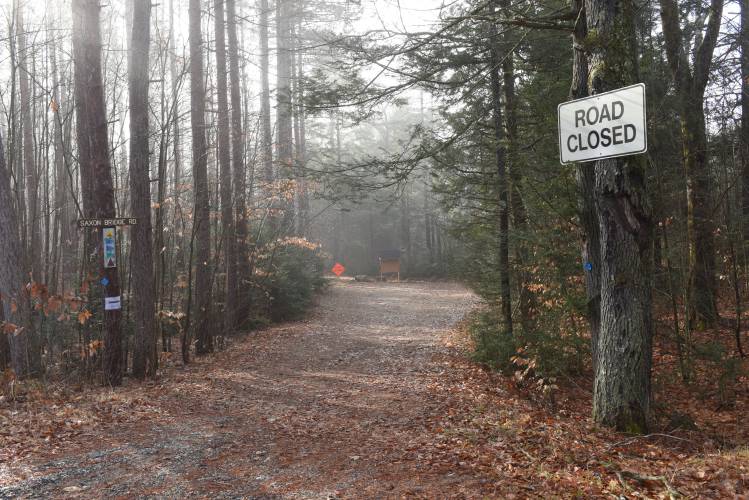
Saxon Bridge Road off of Farley Road in the Wendell State Forest. STAFF FILE PHOTO/PAUL FRANZ
| Published: 01-08-2024 6:23 PM |
The Executive Office of Energy and Environmental Affairs (EEA) has released the long-awaited Climate Forestry Committee’s report, which contains a slew of recommendations for forest management practices in Massachusetts with a key focus on climate mitigation, carbon storage and sequestration.
The release of the report last week — part of the Healey-Driscoll administration’s “Forests as Climate Solutions” initiative — also marked the end of the six-month moratorium on timber harvesting projects on state lands. In a press briefing, representatives of the state agency said they intend to modify new projects to align with the recommendations from the committee.
“The policy choices and actions we take now will impact future generations,” said Climate Chief Melissa Hoffer. “We look forward to incorporating these recommendations into our land management plans and strategies.”
The 12-member Climate Forestry Committee made up of experts emphasized the importance of keeping forests intact by expanding forest reserves, increasing permanent conservation efforts and reducing the conversion of forests to other uses. Noting the critical role forests play in mitigating climate change, the committee urged the state to sharpen its land management focus on climate change mitigation and adaptation.
With the release of the report, the EEA announced it will be allocating $50 million to support the state’s mandated emissions reduction requirements, including — as outlined in the Clean Energy and Climate Plan — conserving 40% of the state’s natural and working lands by 2050. The executive office will invest this funding in forest conservation and incentives that encourage municipal and private landowners to adopt climate-oriented management approaches.
Over a six-month period, members of the Climate Forestry Committee deliberated on recent science about how forests can impact climate change and how they are best managed to maximize carbon storage and sequestration. The committee centered its recommendations around the idea that forest management ranges along a spectrum from the most passive, hands-off approach, where nature takes its course, to active management, where interventions are targeted to advance specific forest conditions. The group’s recommendations cover several areas, including carbon stocks and sequestration, soils, natural disturbances and habitat management, offering climate-centered approaches for each.
Greenfield resident and longtime environmental activist Glen Ayers commended the report for noting the disagreements between committee members and speaking to many sides of the issue.
“It certainly clearly identified there is a controversy and there are disagreements amongst the forestry advisors,” Ayers said.
Article continues after...
Yesterday's Most Read Articles
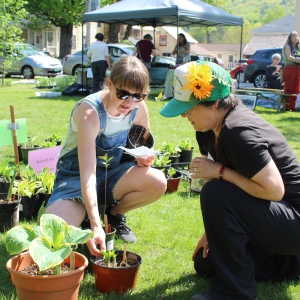 Bridge of Flowers in Shelburne Falls to open on plant sale day, May 11
Bridge of Flowers in Shelburne Falls to open on plant sale day, May 11
 Serious barn fire averted due to quick response in Shelburne
Serious barn fire averted due to quick response in Shelburne
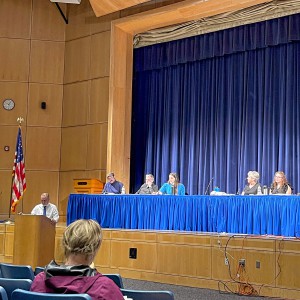 $12.14M school budget draws discussion at Montague Town Meeting
$12.14M school budget draws discussion at Montague Town Meeting
 As I See It: Between Israel and Palestine: Which side should we be on, and why?
As I See It: Between Israel and Palestine: Which side should we be on, and why?
 Greenfield homicide victim to be memorialized in Pittsfield
Greenfield homicide victim to be memorialized in Pittsfield
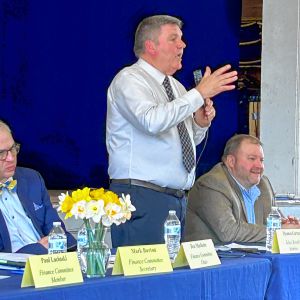 ‘We are among the leaders’: Ashfield Town Meeting voters pass bevy of clean energy proposals
‘We are among the leaders’: Ashfield Town Meeting voters pass bevy of clean energy proposals
Emma Ellsworth, executive director of the Mount Grace Land Conservation Trust, an Athol-based nonprofit that uses forest management practices, said the main takeaway of the report is that the state should avoid forest conversion in favor of forest conservation.
“There is a consensus that we should protect it,” said Ellsworth, noting that there is controversy around management, but the recognition that people can’t live without forest land is a large step.
In addition, the committee discussed strategies for maximizing carbon storage. Members agreed that carbon storage is greatest in older forests, and the state should allow forests to grow old while balancing goals for active management. Ayers said this “is a big admission” compared to the state’s practices before the logging moratorium.
The committee also recommended strategies for pursuing active forest management in a climate-focused manner, including updating best management practices and encouraging EEA to implement its Healthy Soils Action Plan to preserve soil carbon.
Additionally, the committee underscored the importance of natural disturbances for forests and recommended, wherever possible, that dead trees be left on the ground for their biodiversity benefits, rather than be removed.
Recognizing the impact that pests, pathogens and invasive plant species can have on natural and working lands, the committee recommended that EEA evaluate each circumstance individually, including the nature of the invasive pest or pathogen, the tree species impacted, the stage of the invasion and the likelihood of successful intervention.
Ellsworth said this point is important because of two concurrent crises: climate change and biodiversity. She said the way to manage both is to have nuanced, site-specific solutions, which is something the report identified.
Overall, the committee encouraged state agencies to be more specific about the rationale behind forest management projects and their carbon and climate implications, including for water supply protection and habitat management goals. It also called for more investment in data, science and staffing resources for state forest lands.
The administration has also developed an outline and framework for a publicly available dashboard that will launch in 2024, highlighting forest carbon metrics and trends. Projects planned for 2024 include engaging an external contractor to investigate where and how wood from Massachusetts forests is being used and to assess long-lived wood products’ impact on carbon storage.
Ayers called the report a “mixed bag” and said he will keep his eye on the implementation of the guidelines.
“We’ve done the review — now we’re following the science,” said EEA Secretary Rebecca Tepper. “It is encouraging to see that Massachusetts has been proactive in many ways when managing our forests, but our work is not done yet.”
Reach Bella Levavi at 413-930-4579 or blevavi@recorder.com.

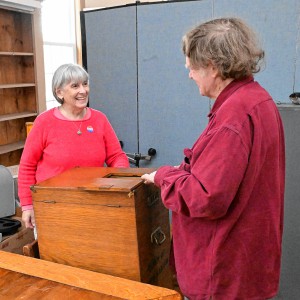 New Salem election ushers in new Selectboard member
New Salem election ushers in new Selectboard member Community Legal Aid expands Disability Benefits Project to Franklin County
Community Legal Aid expands Disability Benefits Project to Franklin County Wear Orange organizers prepare display to remember gun violence victims
Wear Orange organizers prepare display to remember gun violence victims
